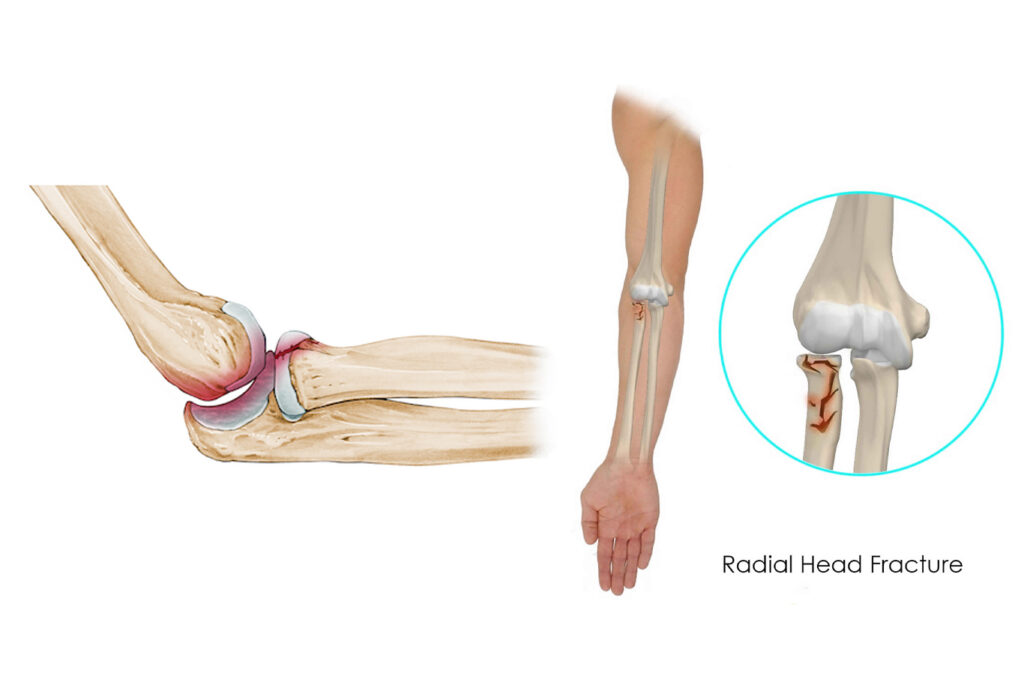The radial head is a crucial component of the elbow joint, contributing to its stability and allowing for smooth movement. However, fractures in this area, especially comminuted fractures where the bone breaks into multiple fragments, can severely impair the joint’s functionality. Radial head replacement has emerged as a valuable surgical solution for patients dealing with comminuted fractures of the radial head. In this blog, we will explore the significance of radial head fractures, the procedure of radial head replacement, recovery, and its impact on restoring function and stability.
Understanding Radial Head Fractures
The radial head is the rounded top of the radius bone in the forearm, which articulates with the humerus bone in the upper arm to form the elbow joint. When a fracture occurs in this area, it can disrupt the joint’s stability and lead to pain, limited range of motion, and potential complications such as elbow instability and arthritis. Comminuted fractures are particularly challenging because the bone fragments can hinder the joint’s ability to move smoothly.
Radial Head Replacement: A Solution for Comminuted Fractures
Radial head replacement is a surgical procedure aimed at restoring the structural integrity of the elbow joint in cases of comminuted radial head fractures. The procedure involves the removal of the damaged or shattered radial head and its replacement with an artificial implant, typically made of metal or a combination of metal and plastic. The primary goals of this surgery are to reduce pain, restore joint stability, and regain functional mobility.
The Surgical Process
Preparation: Prior to surgery, a thorough assessment including physical examinations and imaging studies is conducted to determine the severity of the fracture and the appropriateness of radial head replacement.
Anesthesia: General anesthesia is administered to ensure the patient’s comfort during the procedure.
Incision: An incision is made over the elbow joint to access the damaged radial head.
Removal: The shattered radial head fragments are carefully removed from the joint.
Implant Placement: The artificial implant, which closely mimics the shape and function of the natural radial head, is inserted and fixed securely in place.
Closure: The incision is closed, and the surgical site is dressed.
Recovery and Rehabilitation
Following the surgery, a period of recovery and rehabilitation is essential for optimal outcomes. Patients may be required to wear a splint or cast initially to protect the joint. Physical therapy plays a pivotal role in regaining strength, flexibility, and range of motion. The rehabilitation process is gradual, with exercises tailored to the individual’s condition and progress.
Benefits of Radial Head Replacement
Pain Relief: Radial head replacement can significantly alleviate pain and discomfort caused by the fractured bone fragments rubbing against each other.
Joint Stability: The artificial implant restores stability to the elbow joint, reducing the risk of recurrent dislocations and instability.
Functional Restoration: Patients can regain functional mobility, allowing them to perform daily tasks and activities more comfortably.
Reduced Arthritis Risk: By restoring the joint’s stability and alignment, radial head replacement can potentially lower the risk of developing arthritis in the elbow joint.
Conclusion
Comminuted fractures of the radial head can have a significant impact on a person’s quality of life, limiting their ability to perform even basic tasks. Radial head replacement surgery offers a promising solution to restore function, alleviate pain, and provide stability to the elbow joint. With careful patient selection, skilled surgical techniques, and diligent post-operative rehabilitation, individuals suffering from comminuted radial head fractures can look forward to improved joint health and a better quality of life. If you or someone you know is experiencing such fractures, consult a medical professional to explore the best treatment options available.
